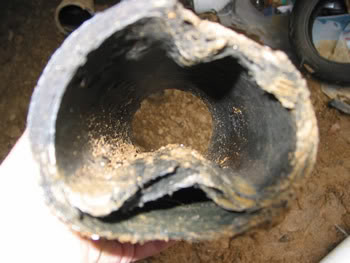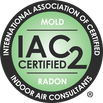Mike's Home Inspector BlogMichael Burfitt |
|
While I pride myself on being thorough and detailed in all my inspections it is simply impossible to catch every small detail, especially when the previous owner/tenant’s belongings are still in place. Here are some examples of areas a home inspector generally doesn’t focus their priorities to. Not to say we don't look but it is rare we report on these issues:
Lightbulbs I make it no secret that I am big on energy efficiency and am a huge fan of Light Emitting Diode (LED) bulbs. Fun fact, I actually worked with LED lighting all the way back in 1998 and saw great potential in it as a High School student. Simply put, LED bulbs are brighter, last longer, don’t fade with age and generate very little (waste) heat. In fact, the very first thing I did upon moving into our home was replace almost all our mostly incandescent lighting with LEDs. However, this is not something I check for because:
Flooring Not only are cosmetic finishes excluded from a standard home inspection, but in most cases the flooring, if it isn’t brand new, almost always has defective areas. It can be very difficult to identify the quality of a flooring installation from look alone and in many cases new homeowners prefer to change the flooring style anyway. I do look out for major safety issues, especially signs of rot in the subfloor but normal wear and tear, scratches, dents etc. are normal in a lived-in home and to be expected. I will however point out inappropriate flooring choices such as carpet in bathrooms and kitchens. Drywall I am generally not worried about holes or dents in drywall as, like most homeowners, I have created more than one moving furniture or carrying a large, pointed object. In fact, it can provide the inspector a way to see in behind the walls even if just a small area. Drywall is generally easy to patch and repair and I have done this myself without issue for a very low cost (I am a professional home inspector NOT a professional drywaller, but I digress). Having said that, I do notice and evaluate cracks or holes in a ceiling as they can provide valuable clues and always comment on holes in attached garages. Sheds While outbuildings are not included in standard home inspections, if I could sum up my observations on the sheds I have inspected I could simply just say “recommend complete replacement” as the cost is usually cheaper than doing necessary repairs. In my experience, sheds have a shorter life expectancy, are generally not maintained or properly footed as they aren’t designed for living and are rightfully not a priority for homeowners on a limited budget. I have discussed previously that as a professional home inspector, one of the most important skills to be successful in this field is discretion about what is really important and not just filling in lines on a boilerplate. Roofing, HVAC, electrical, plumbing and structural systems are the areas that can be very expensive to repair/replace and are the focus of the majority of our efforts. While I pride myself on being incredibly thorough in my inspections, the simple fact is that we home inspectors simply do not have the time to document every single issue within a home: as much as I am proud of being meticulous, I know it is important to maximize my time by focusing more effort on the big issues that greatly impact safety, efficiency and/or have a significant financial impact. Here are some examples of where I focus my attention:
Roof I recently did an inspection where the roof was not visible from ground level and was approximately 20 feet off the ground. It was a struggle to get a good look at it, but I am glad I took the time to do that. To put it nicely the roof was in very bad shape and needing a roofing contractor to evaluate it and replace the shingles as soon as possible. Not only are roof jobs expensive but contractors are usually booked well in advance and even small leaks can cause significant damage. Electrical I have previously touched on this in a past blog post: not only is a home’s electrical system very important from a safety point of view (electricity kills and electrical fires are far too common) but also from a functional point of view. Due to skyrocketing housing costs the average size of a household is growing along with their electrical needs. For example, a system designed for 2-3 people can encounter significant issues and require expensive upgrades to accommodate a household of 6. I also see a concerning lack of smoke and Carbon Monoxide (CO) detectors. Foundation While foundation cracks are very common and usually a result of simple settling (ALL buildings settle), some cracks can be symptoms of major structural problems that can cost well into the 5 figures to correct. Fortunately, while catastrophic problems are rare it goes without saying it is not something I want to miss. HVAC (Heating, Ventilation & Air Conditioning) There is no easy answer for what the best HVAC system is as every option has its pros and cons: in my home I have successfully replaced most of our electric baseboard heaters with a ductless mini split system, but this may not work for you. One area of concern for me is the large number of older systems still in use: while they can last for years to come, they could potentially fail at any time and do not take advantage of modern energy efficiency. Another thing to consider is that many homes in Nova Scotia do NOT have mechanical cooling. Given the recent hot and humid summers this is definitely something home buyers, especially those shopping outside of July and August should be aware of. Drains I can’t tell you how many homes I have inspected that are missing floor drains, particularly near washers located on the top level of a home. When we moved into our home, the water tank burst before we could arrange a replacement and we woke up to a flooded basement on day three as the drain was covered by rigid insulation (and that's another blog post!) and I did not yet get a chance to correct it. It can be difficult to add proper drains but at least a home buyer can be aware of the potential issues from a washing machine or water tank. This list is by no means exhaustive but merely a sample of what is important to be focused on during an inspection. I am not as concerned about finding the $100 issues as I am the $10,000 issues and how to identify a potential money pit or an unsafe home. Being a professional home inspector means there is never a time where you can say that the learning stops and you know everything. If I haven't made it clear through my credentials, I have an insatiable appetite for growing my understanding of all things home related that was fostered both through my late Grandfather (possibly the most skilled carpenter I have ever known) and 14 years at working with NSCC. My education continues to this day as can be seen clearly in the photo above: I especially like to learn more about topics that are only lightly touched upon in the formal home inspector programs: one such topic is marijuana grow-ops.
As everyone is well aware, marijuana has been legal in Canada for a while now and while still technically illegal throughout the entire United States, in reality as of 2021 only 5 out of 50 states have a full ban on it. One of the consequences of this is a drastic decrease in the black market and a corresponding drop in houses that are used to grow large quantities of cannabis illegally. It goes without saying that former growers generally do not advertise what the home was used for in the past and it can be difficult to identify a house that was used as a grow-op. There are a number of reasons why it is critical to know if the home was used as a grow house aside from insurance and mortgage issues:
I remember way back when I worked in home improvement retail how it was emphasized over and over that there is no ‘profile’ of a shoplifter, and the 'average' thief could look like literally anyone from any background, culture, gender or age. This is a good analogy for grow-ops: contrary to the stereotype that drug houses are run down, dirty and scary looking they can just as easily be your neighbour with a clean, well-maintained property. Grow-ops were generally designed to blend in to not attract attention and this is the reason it is important to know the signs and keep an eye out for clues that a home might have been used for nefarious purposes in the past. These are numerous and include:
I should point out that a house can have all these signs and more and simply have nothing more than easily fixable insulation problems. Even poor electrical or plumbing work is merely a clue that causes me to look closer not loudly and immediately proclaim that I found a drug house. It can be extremely difficult to identify a former grow-op that has been covered up but an inspector can point out many areas that suggest a high likelihood of a past that is far from advertised. One of the biggest concerns I see from potential new homeowners is the cost of dealing with sewer problems. While it can be very expensive to repair a sewer line, the biggest concern is having sewage backing up into the home and being unable to use water until repairs are completed. In many cases I recommend getting the main sewer line scoped to check for clogs or damage before a home is purchased.
While it is always a good idea to get a sewer inspection done, I generally tailor my advice based on the individual property being inspected. As a rule of thumb, every home over 20 years old should have the sewer lines checked but it is especially critical to get an inspection done for the following two scenarios: The Property has Large Trees It goes without saying that large trees have large roots, roughly equivalent to the span of the branches. The biggest concern is that roots can pierce and slowly destroy the sewer lines, leading to sewer backup or a sewage leak on the property. The Home is Older, Especially a Home Built in the Mid 70s or Earlier There are several common-sense reasons older homes are more likely to have sewer failures, but the main concern I have is no-corrode piping, otherwise known as Orangeburg. Contrary to the name, these pipes are black, not orange and are named after Orangeburg, New York where they were originally manufactured. They were generally used residentially from the early 1940s to 1974 and are made of compressed wood fibers and tar. Not only are they at the end of the expected 50-year lifespan but this type of pipe tends to collapse and cause complete sewer blockage and is a cheaply made, poor quality material overall. It is never my intention to alarm or scare homeowners or home buyers, but the simple fact is that no-corrode piping needs to be replaced if discovered: if it hasn’t failed already the chances of failure in the coming years is very high and it is a miracle there are still functioning Orangeburg systems in 2021. The only way to determine if you have it is to have the sewer system scoped. This is a service that I am looking to add to our company in the near future but in the meantime, there are several plumbing contractors that can perform a sewer inspection. Here are a few warning signs that it may be time for an inspection:
Finding a problem early before it escalates to a complete blockage or sewer pipe collapse will allow to time to plan a repair on your schedule while avoiding the nightmare that is sewage backup into a home. I have seen the results of sewage going where it shouldn't, and I promise you it isn’t something you ever want to see or smell. According to the InterNACHI Standards of Practice, we are required to check for and report as in need of correction “the presence of solid conductor aluminum branch-circuit wiring”. Does this mean aluminum wiring in a home is dangerous? Not necessarily.
Let’s first back up to the 60s. While that timeframe might bring images of Woodstock, counterculture or political change to a home inspector a different type of change comes to mind: that of a switch from copper (CU) to aluminum (AL) wiring due to the skyrocketing cost of CU wires in the mid-1960s. Until about 1973 this type of wiring was almost exclusively used in branch circuits, which are the wires that go to individual outlets and switches. Why is this type of AL wiring a concern? There are several reasons: AL Wiring is More Malleable Another way to say this is to say it is damaged easily. As it is a softer metal, it can be nicked or damaged far easier and a more amateur installation can greatly reduce the ability of the wire to safely carry electricity (and heat). AL Wiring Expands/Contracts Easily The #1 issue with AL wires is the significantly increased fire risk. The biggest danger comes from connections can come loose that can build up heat and eventually lead to an electrical fire. AL is an Inferior Conductor Compared to CU wiring, AL is not as good of a conductor of electricity. In most cases this is not a problem as an electrician knows to account for this but amateur DIYs might not realize the size difference between CU and AL. To give you an example of what I mean, below is a sample chart of the proper types of wire to use. Remember as the gauge gets smaller the wire gets bigger. As you can see AL is one size bigger in almost all conditions. AL wiring was never discontinued or banned and is still widely used to this day. Due to its low weight, it is the preferred material for outdoor transmission lines and is frequently seen inside homes as the material the main service conductors are made of. As well, post 1973 aluminum wiring is of a much higher quality and generally does not have the safety issues just mentioned to nearly the same degree. To summarize, while widely used, AL wiring can be considered dangerous in certain circumstances, especially if installed from 1965 to 1973. A home inspector can identify if you have this type of wiring and if so, will recommend an electrician evaluate the system to see if any corrective action needs to be taken to ensure the system is safe and functional for years to come. |
Archives
July 2024
Categories
All
|
|
Inside Edge Home Inspections Ltd.
Halifax, NS 902-209-9921 [email protected] Proudly Serving the HRM & Central Nova Scotia |




 RSS Feed
RSS Feed

